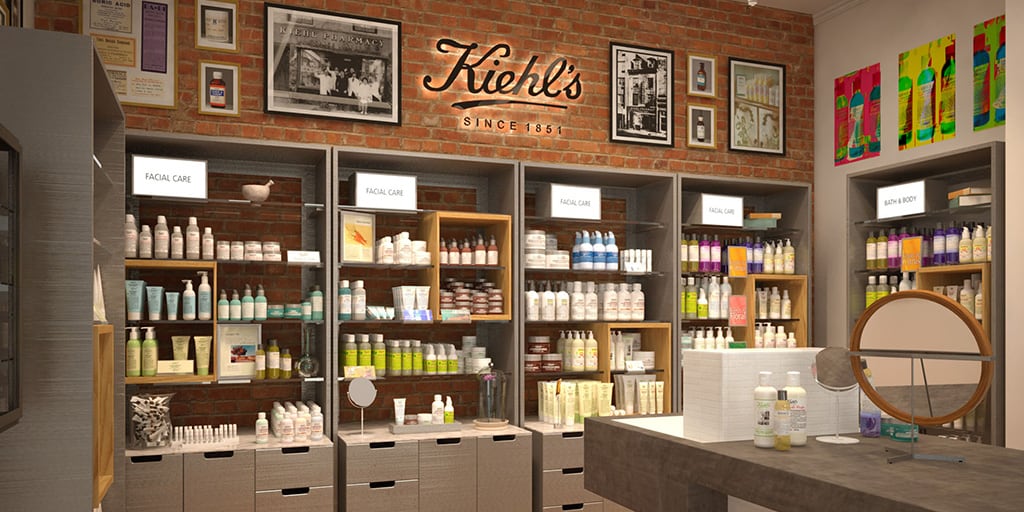Any company that clearly understands its customers’ needs – and methodically focuses on how to meet those needs – clearly differentiates itself from the competition. Take Kiehl’s, for example. The brand has never advertised. Instead, the 165-year old purveyor of premium body-care products owes much of its global success to tailoring products and services to...
Any company that clearly understands its customers’ needs – and methodically focuses on how to meet those needs – clearly differentiates itself from the competition. Take Kiehl’s, for example. The brand has never advertised. Instead, the 165-year old purveyor of premium body-care products owes much of its global success to tailoring products and services to meet customers’ needs. Word-of-mouth promotions, free in-store product consultations, and friendly, professional employees have enabled the brand, bought by L’Oreal in 2000, to build its reputation as a top customer-centric business.
Founded as a pharmacy in New York’s East Village in 1851, the brand has grown to over 250 stores worldwide, also selling products in luxury department stores and through its online shop. Walk into any Kiehl’s shop and you will instantly feel relaxed by the minimal and well-organized space and helpful staff dressed in white lab coats. Kiehl’s Customer Service Representatives (or “KCRs” as they are referred to within the company) are under no pressure to “make the sale”. Instead, they are trained on how to educate customers about products, offering remedies for any skin type so that customers don’t waste time or money.
Cammie Cannelle, VP of Global Education and Customer Relations, describes Kiehl’s unique approach to customer service this way: “When we are educating our KCRs, one of the first things we teach is the Kiehl’s approach to service, for which our motto is ‘We’d rather make a friend than push a sale.’ Our KCRs tell us that they love coming to work because, instead of selling, they get to be educators and problem solvers.”
Tailoring Customer Service
In-store and online branding efforts are important to Kiehl’s, providing the retailer with a clear point of differentiation and providing customers with a clear reason for shopping. But what really sets Kiehl’s apart are the lengths to which it goes to understand individual customers, and how to best serve them.
For example, Kiehl’s links online and in-store databases to digital campaigns. CRM databases are created from web signups, in-store profiles, and historical purchase behavior, and used in targeted email campaigns. Customers can be segmented down to exact items they have purchased, enabling Kiehl’s to communicate specific messages to those customers.
In addition, visitors to the Kiehl’s homepage are targeted with a promotional banner. Each customer’s experience is shaped by his or her response to this banner. If a customer clicks on it, the offer remains persistent throughout the shopping experience. If the customer doesn’t click on it, further banner offers appear until all banners have been exhausted. By segmenting customers into small groups based on clicks and purchase behavior, Kiehl’s empowers each customer with choices while also tracking a customer’s journey throughout the entire shopping experience. Moreover, by gauging purchase history, Kiehl’s can easily identify the impact each customer has on its revenue and, therefor, identify its most valuable customers.
Connecting with Customers
Despite its lack of advertising, the brand has figured out an efficient way to communicate directly with its most valuable customers. Building strong engagement with customers is at the forefront of all Kiehl’s sales and marketing initiatives. Here is a sampling of some of the ways they do it:
- In particular, Kiehl’s has gone out of its way to focus on male shoppers, less experienced in buying and using grooming products. The company has designed an online magazine called The Men’s Wing, bringing Kiehl’s products to life though informational videos. Customers can also submit personal questions that they may be too embarrassed to ask in person. Free shipping and free samples, as well as an automated auto-replenishing service, ensures that difficult-to-reach male customers remain engaged with the brand. And Kiehl’s tailored approach to satisfying the needs of male customers has paid off handsomely, with the company enjoying a 25% growth in male customers in 2014. Currently, men make up 1/3 of the brand’s global customers.
- SMS: After a six months pilot period, the Kiehl’s alerts campaign, designed to inform customers about products and services, generated noticeable sales. The company reported that 73% of all customers signed up for the program with nearly 90% of those customers making a purchase within the same six month period.
- Customer Feedback: The company’s website encourages customers to leave comments about product purchases, conveniently requesting those who do so to also submit information about gender, age, and length of Kiehl’s consumption, all of which further enables the brand to specifically target unique segments.
Segmentation and lifecycle campaigns like these show that Kiehl’s understands the importance of targeting individual customers. Clearly defining its customers enables the company to offer more relevant products and service, which help it to not only retain brand loyalists but also acquire new customers.








